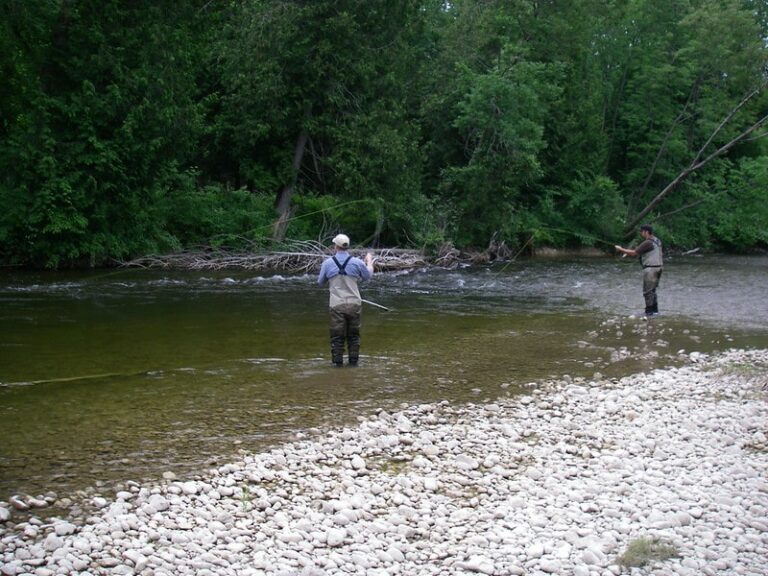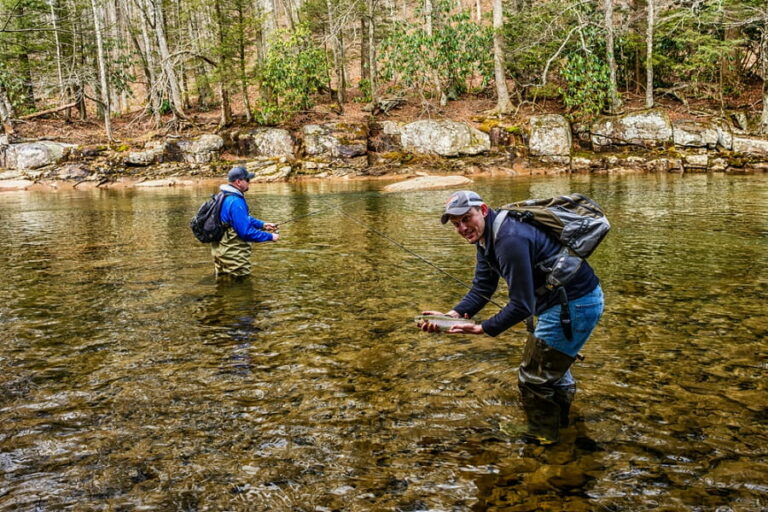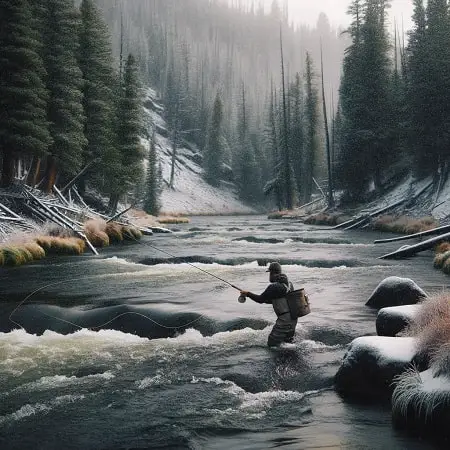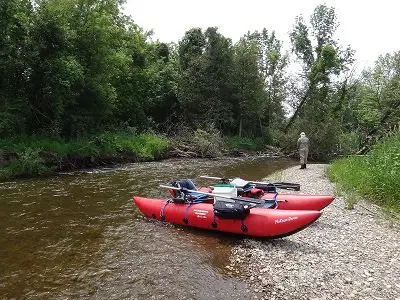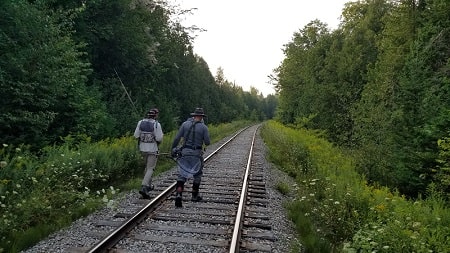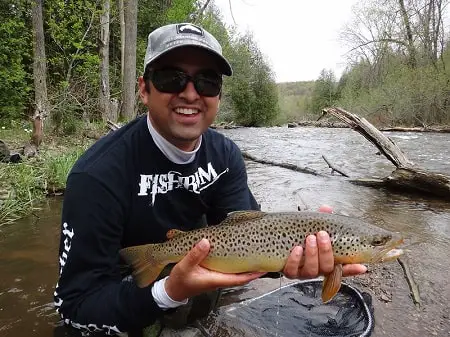An Experts Step By Step Guide To Learn To Fly Fish
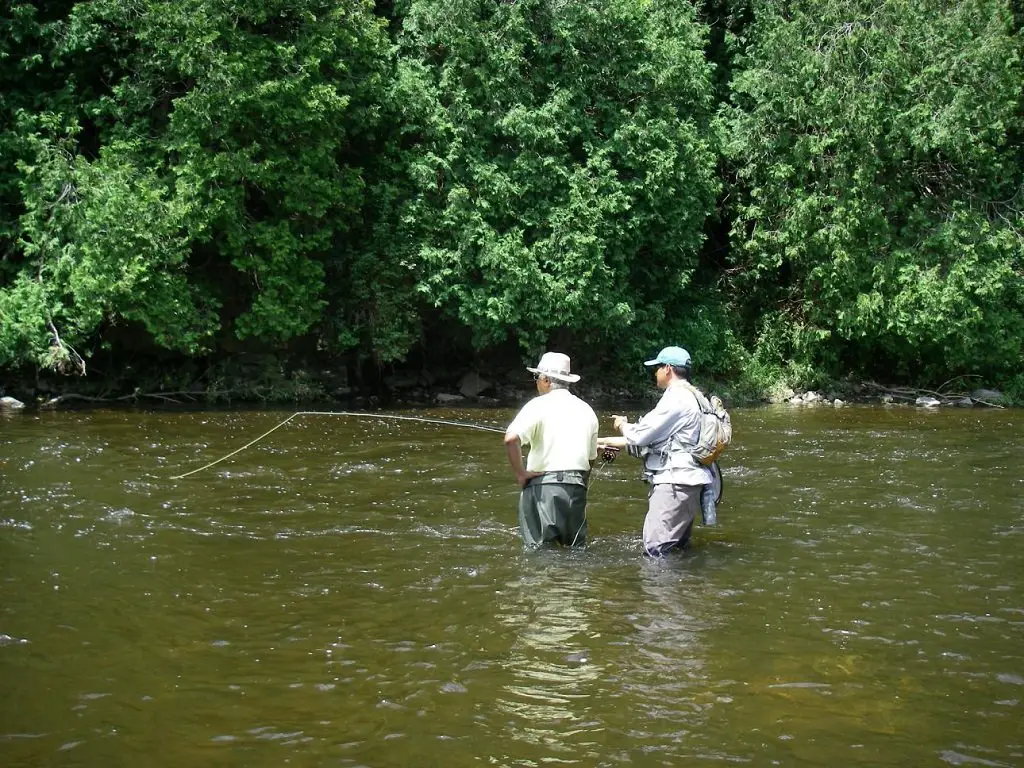
If you want to learn to fly fish, you’ve come to the right place. As a guide for the last 22 years, I have taught thousands of anglers how to fly fish for trout, steelhead, salmon, and bass. I have come up with some simple steps that will make it easier for any angler to fly fish.
To fly fish well, you need the following:
- The right gear
- The right fly for the species you want to fish for
- Three good knots
- A river or lake to fish
- Knowledge of where to find the fish and how to fly fish
- Casting practice
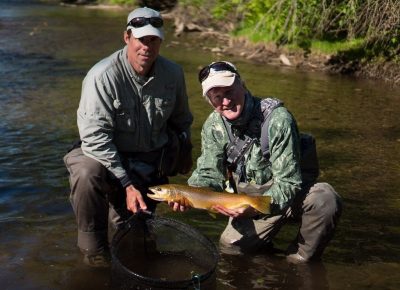
For some anglers learning to fly fish, it can be confusing or frustrating, but it doesn’t need to be if you follow the same ten steps and the same advice I give to all new fly clients.
We may make a small commission from some of the links on this website, which is at no cost to you. I appreciate your support.
1. What Type Of Fly Fishing Should I Start With?
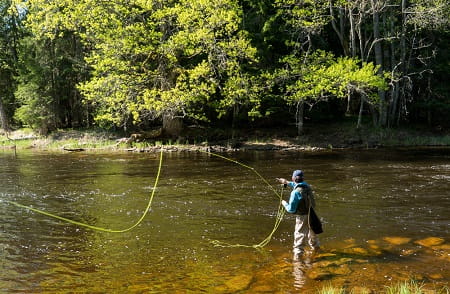
There are five main fly fishing methods, but don’t worry because you don’t need to learn how to do them all.
I recommend determining which one or two fly fishing methods interest you the most and then focusing on learning just them.
Don’t try to learn how to dry fly fish, nymph fish, streamer fish, wet fly fish, and Spey fish all at once, or you will end up doing each one poorly and none of them well. Just learn one at a time.
2. What Species Should I Fly Fish For?
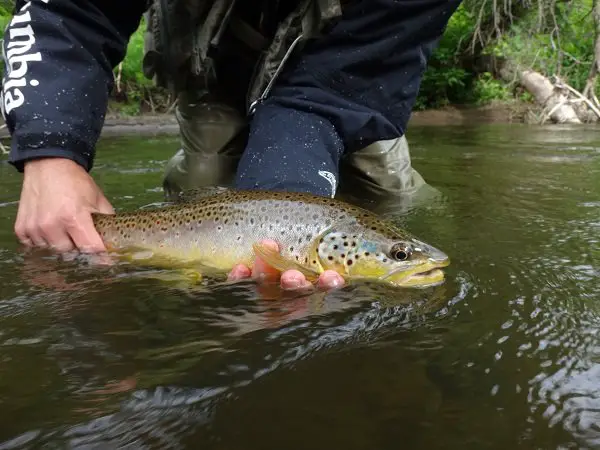
If you are going to learn how to fly fish, you should also have an idea of what species you will be fishing for. This will help you determine what the next steps are.
Knowing what species you would like to target can also help you determine what fly-fishing methods are best
The best methods for each species are:
- Trout: Dry Fly, Nymphing, Streamer Fishing.
- Bass and Panfish: Streamer Sishing.
- Steelhead: Nymphing.
- Salmon: Nymphing.
- Predatory Species – (pike, salmon, bonefish, etc.): Streamer fishing.
3. What Gear Do I Need To Start Fly Fishing?
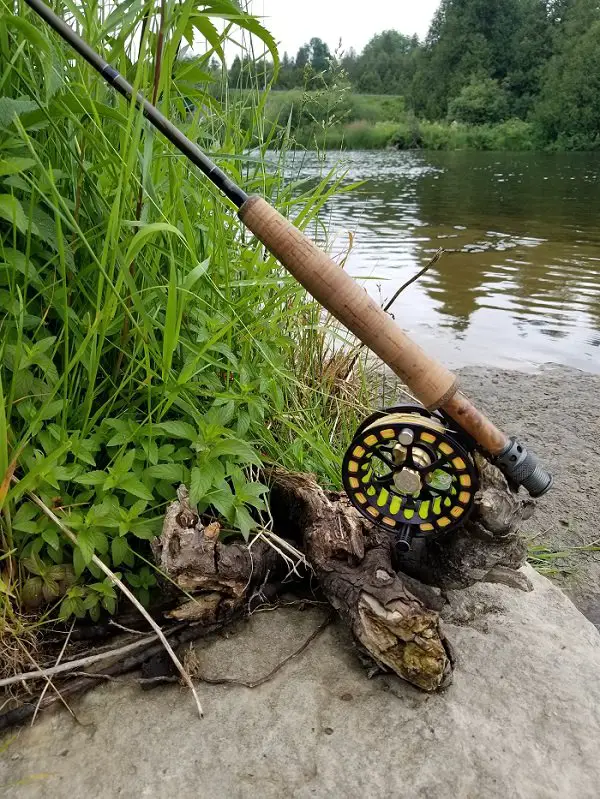
If you are going to learn fly fishing, you will need the appropriate fly gear for the type of fish and the type of fishing that you want to do.
Once you know the style of fly fishing that you want to do and the species that you want to fish for, you can go out and buy a suitable rod and reel with the appropriate line and all the terminal tackle.
The must-have fly gear that you need to start fly fishing:
- Fly Rod
- Fly Reel
- Fly Line
- Leaders
- Tippets
- Nippers
- Fly Box
- Flies
- Forceps
Non-essential gear that I recommend
- Fly line cleaner
- Polarized glasses
- Dry fly dressing
- Wading net
- Waders
- A vest or tackle bag
- Wading jacket
- Weights
- Indicators
Click the link for my advice on all general river fishing gear, like the best waders, jackets, vests, etc.
4. Learn To Fly Cast
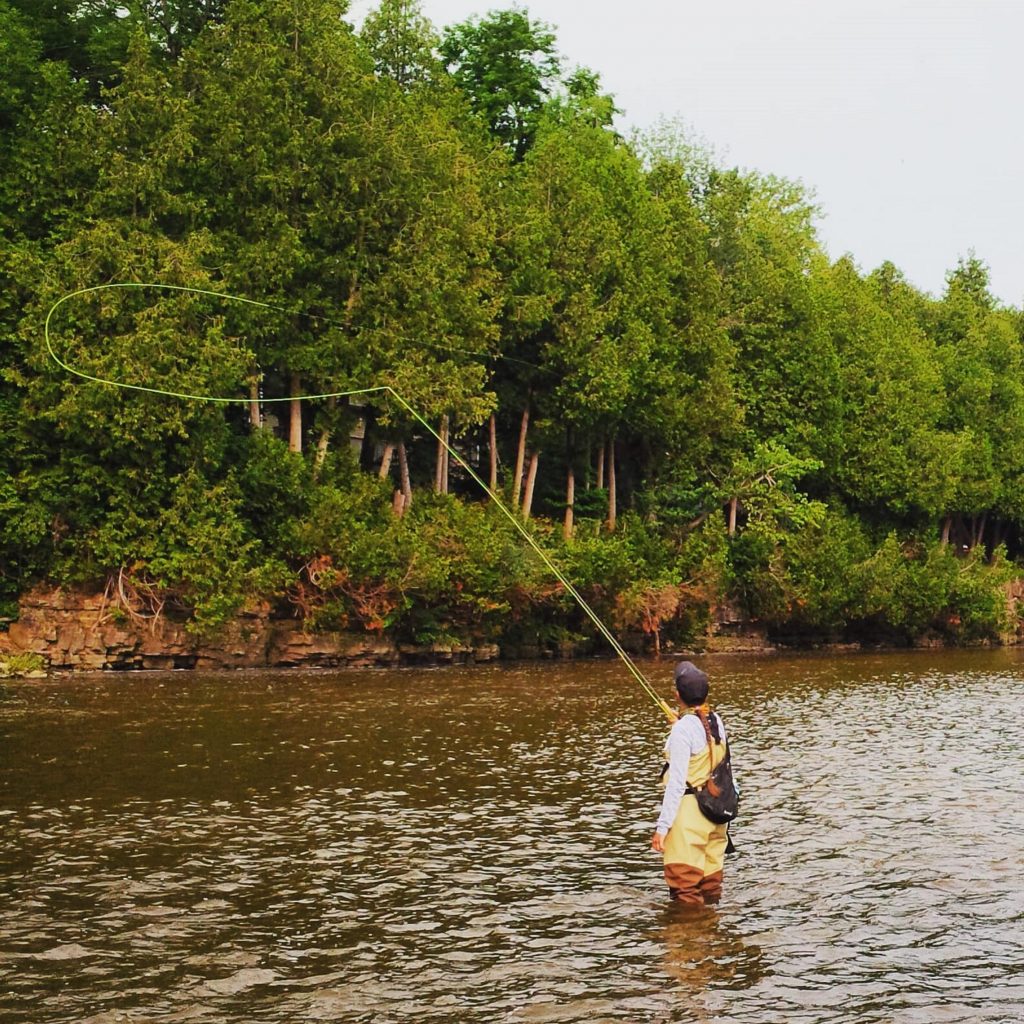
You will need to learn how to cast a fly line for each method that you want to fish.
If you nymph fish, there is a different cast that you will need to learn than you would for dry fly fishing or for streamer fishing.
If your plan is to learn to do nymphing first, then save the dry fly casting practice for later.
But if you plan to dry fly fish then you need to learn the standard fly cast and maybe the roll cast.
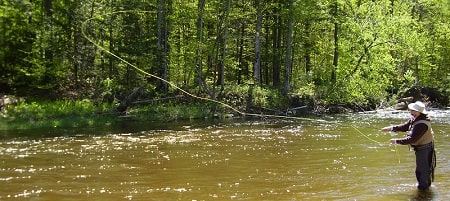
With good casting, you can avoid many of the problems that frustrate most beginner fly anglers and you will catch fish faster and you will catch more fish.
Check out this short video for learning to cast, but remember, a good video is never as good as a lesson from a good fly fishing instructor.
5. Learn The three best knots
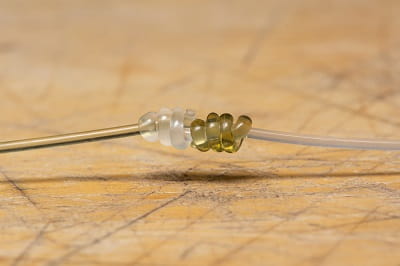
When learning to fly fish, all you need is one good knot to tie your fly onto the tippet (tippet is the bottom section of the leader), and two good knots to tie your tippet onto your leader. That’s it!
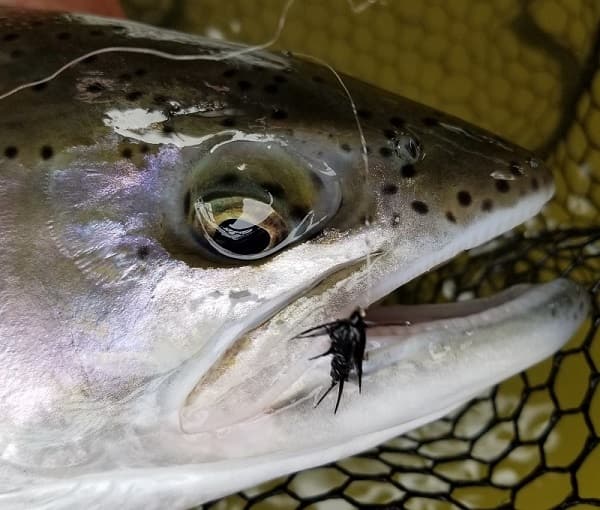
- Fly To Tippet Knot – Double Davy Nnot or Improved Clinch Knot
- Tippet To Leader Knot – Triple Surgeons knot or the double uni knot
See my article: Fly Fishing Knots For Beginners: The Ones That Guide Use.
6. Fish The Right River For A Beginner
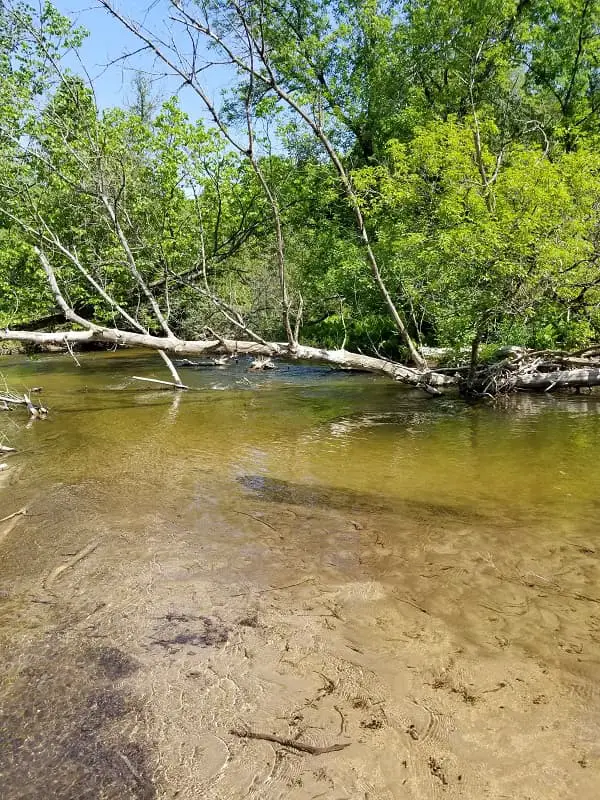
If you are new to fly fishing, don’t go and fish the most technical river or a river known for big fish.
Big fish don’t come easy for guys that don’t know what they are doing.
If you decide to go fish some tiny little creek with lots of trees all around you and lots of wood in the river, you will likely have tons of problems and be very frustrated.
You will end up losing half your flies in the trees and the other half on logs in the river and probably not catch any fish.
That’s why I recommend finding an easy river to fish that has lots of little fish to catch, which will give you the confidence in your skills to start fishing harder rivers with bigger fish.
7. Know A Little About Flies
There are also thousands of flies in the fly shop to choose from. Read this before you buy a single fly!
A simple fact of the matter is that when it comes to fly selection, trout are less picky than most guys think (most of the time).
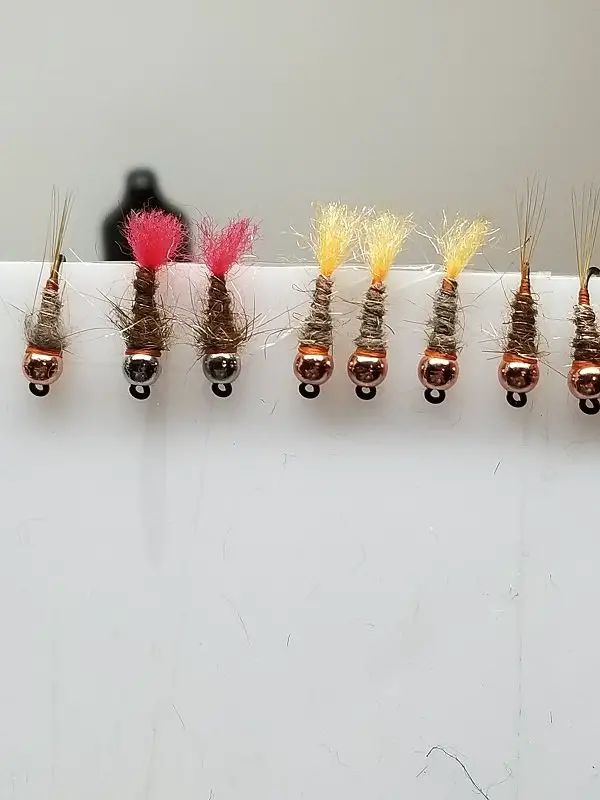
When learning to fly fish, I think it’s better to focus on learning some of the other more important things like learning where the fish are, learning to present your fly properly, and learning to approach the fish better.
Stick with a few popular flies in a couple of sizes and go fish them as best as you can.
Most rivers have hatch charts that you can use as a guideline to help you choose the flies for your area, or go to the local fly shop and ask them, or check out my most effective trout flies that work great everywhere I go.
There are also certain flies that are very effective if you plan to fly fish for steelhead or nymph for salmon.
8. Learn To Read The Water To Find Fish Easy
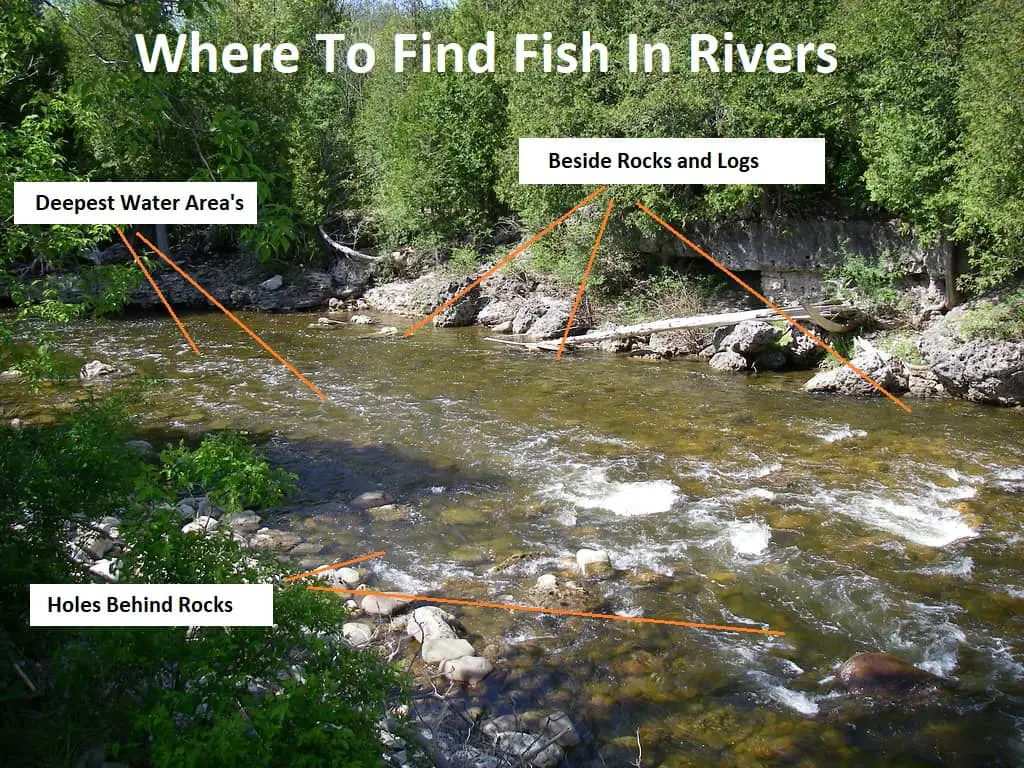
You need to learn where the fish are which is what we call reading the water.
Reading the water simply means knowing where the fish should be and where they shouldn’t be.
Know The Best Way To Approach The Fish
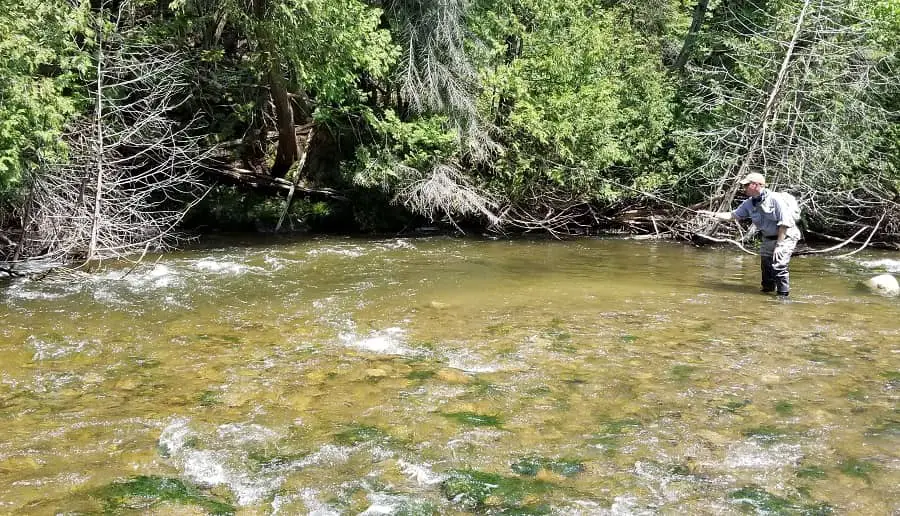
When you fly fish, you need to know how to approach the fish.
Spooking fishing is a huge problem that new anglers face and can be easily avoided.
I have taught anglers how to present their fly properly, stay stealthy, and fish from behind, and once I teach them this, they go from catching 6 to 12 trout a day to catching 30 or 40 in a day, and the size of the trout goes up too.
If you want to catch more and bigger fish, one of the most important things you need to do is learn to approach the fish slowly, stay super quiet, and come in from behind them.
Match The Speed Of The Current
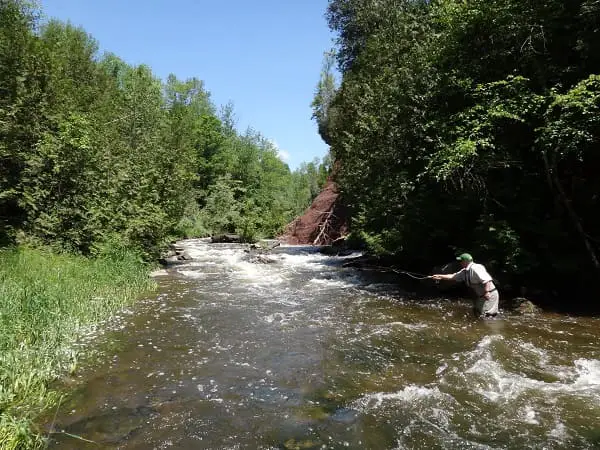
You need to understand that the way you present your fly will be one of the most important things you will need to know how to do well.
Not presenting your fly well will mean few big fish, even if you do all the other things right or even if you have the best fly on your line.
The best thing I can tell you is that you need to match the speed of the current where their food is and not bounce your fly or drag your fly around during the drift. This is a tricky one because even anglers with many years of fly fishing experience still don’t do this well.
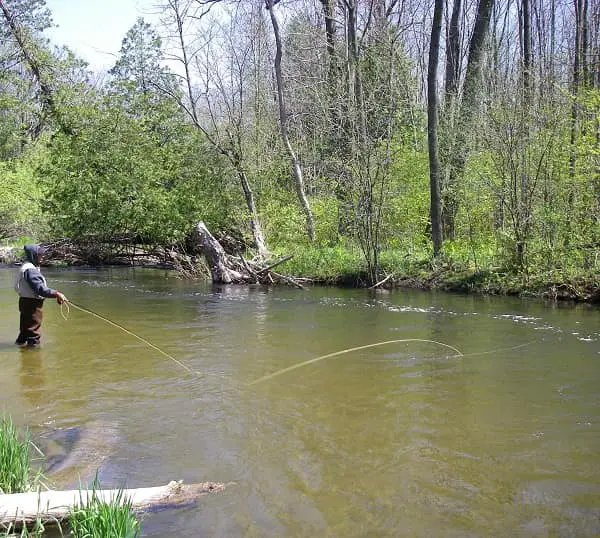
If your fly is on the surface, you need to make sure it’s not dragging.
Dragging occurs when the current pulls the fly line or the leader too fast which then pulls your fly unnaturally fast.
Unnaturally fast looks unusual to big fish, and they will ignore your fly then and maybe on all future drifts, too.
Slowing your fly down using mends or holding your line back to match the bottom current can make a huge difference in catching more fish.
A mend, or mending the line, means repositioning the line to get a better more natural drift.
Most mends are done upriver of the fly to prevent the line from passing the fly and then dragging the fly too fast. Watch this video on how to mend a fly line.
If you mend properly, you can match the bottom speed better, and that means it will look more natural to bigger fish and your chances of catching them go WAY up.
Know How To Land A Fish
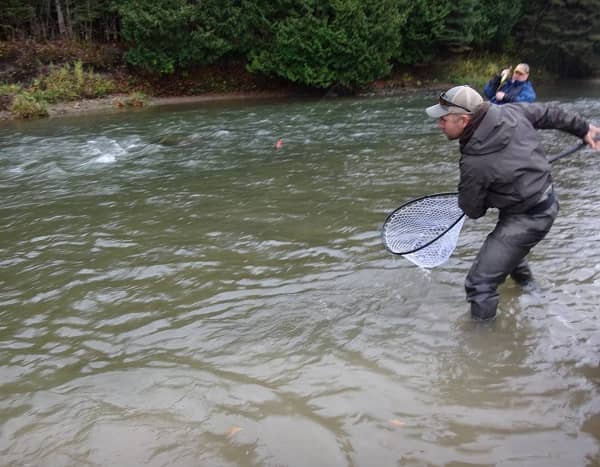
Most fly rods are around 9 feet long, and I have watched too many anglers reel in their fish all the way to the tip of their rod, thinking that is what they needed to do.
Unfortunately, the tip is 9 feet away from you and so then is your fish, this is a rookie mistake.
I tell all my clients to never reel in more than a rod’s length of the line, and when the fish is at the rod’s length, change your rod angle upwards and USE A GOOD TROUT NET!
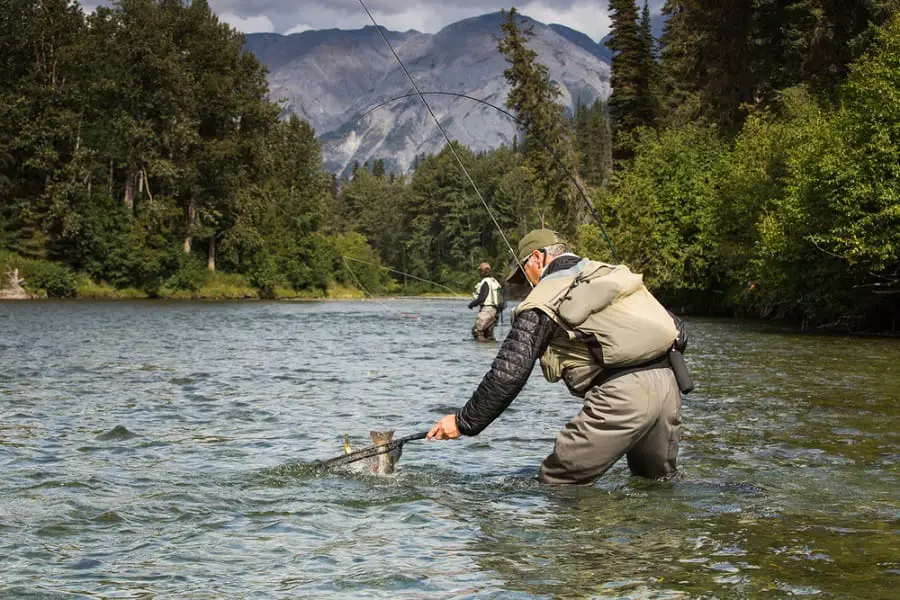
I use and recommend many nets, but I use an inexpensive trout net like the Frabill Trout Net which is suitable for wading along the river.
Know The Fishing Laws For Your Area
Don’t get caught fishing out of season or in areas where no barbs or bait are allowed, or where there is catch-and-release only rules.
It’s your responsibility to know the rules for the area and the river you plan to fish on so look it up before you go.
Talk To A Local Fishing Store
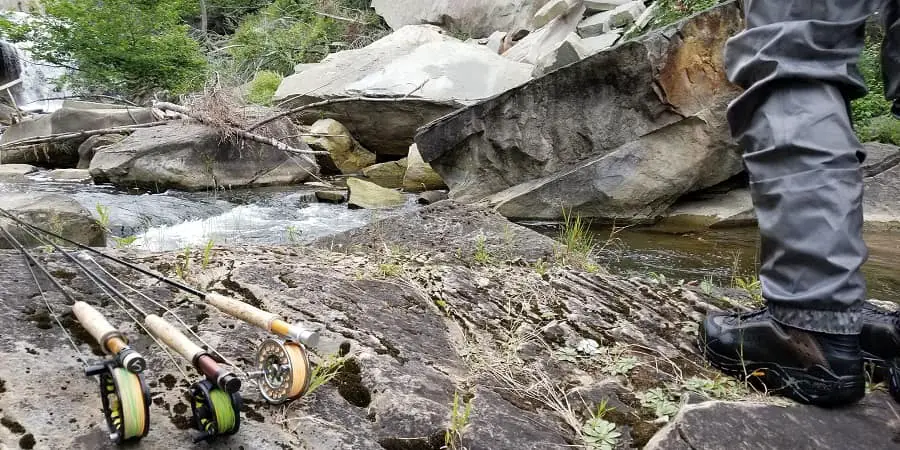
The local fly shops can be a wealth of information, from the current river conditions to the best flies to use, the best time, the best guides in the area, and the best methods to use.
The guys in the fly shops fish the local rivers and are often very helpful, so go buy something and pick their brains while you are there.
Learn To Fly Fish Faster With A Mentor
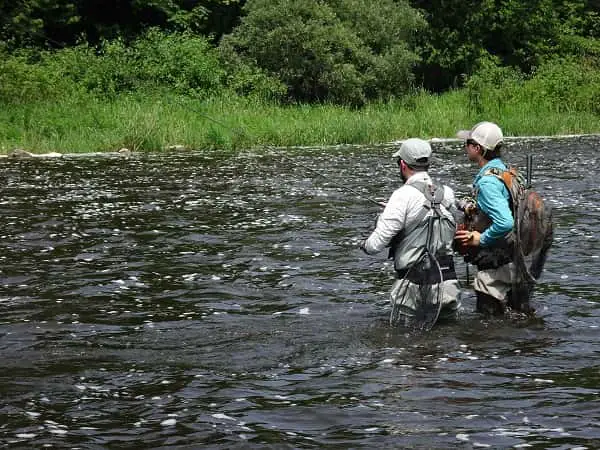
I have guided anglers who have been learning on their own for over ten years, and one day with me and they go from catching a few fish each time out to having a ton of confidence and then catching five times as many fish as they ever have before.
If you can’t afford a guide, find a mentor, someone who knows how to fly fish properly.
Another way to learn fly fishing is through a local club. You may find local fly clubs where you can meet guys to learn from, or you may find a fishing partner on local Facebook clubs.
Guide Tip: Be observant. If you see someone catching a ton of fish and you’re not, stop fishing for a while and just watch what they are doing.
Stream Etiquette
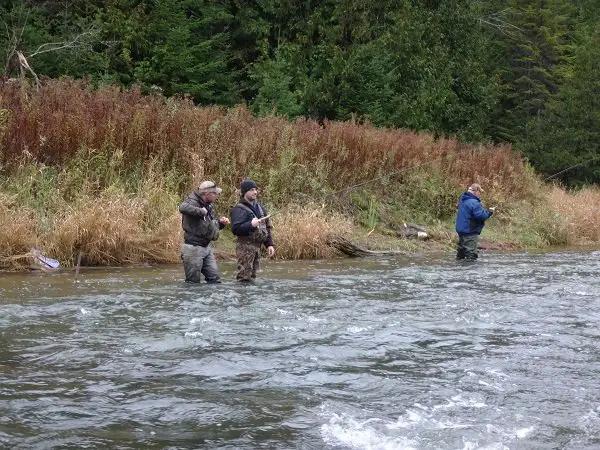
You should offer respect for others around you, and don’t be the idiot who stomps in too close to another angler and spooks all the fish in the pool.
These are my tips for fishing around other anglers.
- #1. Leave the other guy alone. If possible, don’t walk into a spot where others are fishing.
- #2. Move In Quietly: If you must fish in the same spot as another angler, move in quietly.
- #3. Stay As Far Away As Possible: When passing other anglers fishing, stay as far away and as quiet as possible.
- #4. Don’t litter!
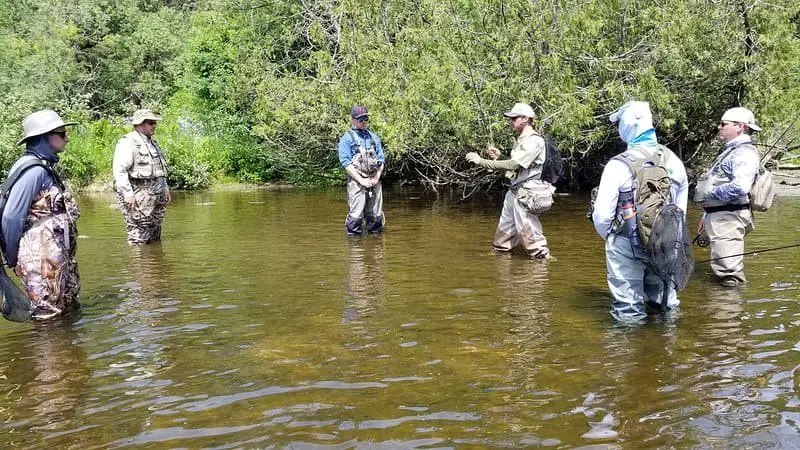
You have just read the revised and shortened article. The full article is more in-depth and covers a lot more information. You can see it HERE.
If you have a question that I didn’t cover in this article, or you have some advice, just let us know in the comments section below.
I discuss the most common question I get at What is Fly Fishing and 26 Other Common Fly Fishing Questions Answered
Tight Lines
Graham
Resources:
Brandon Gaille: Fly Fishing Statistics
Outdoor Industry Association: 2021 SPECIAL REPORT ON FISHING EMPHASIZES HIGHEST OVERALL PARTICIPATION IN 14 YEARS

